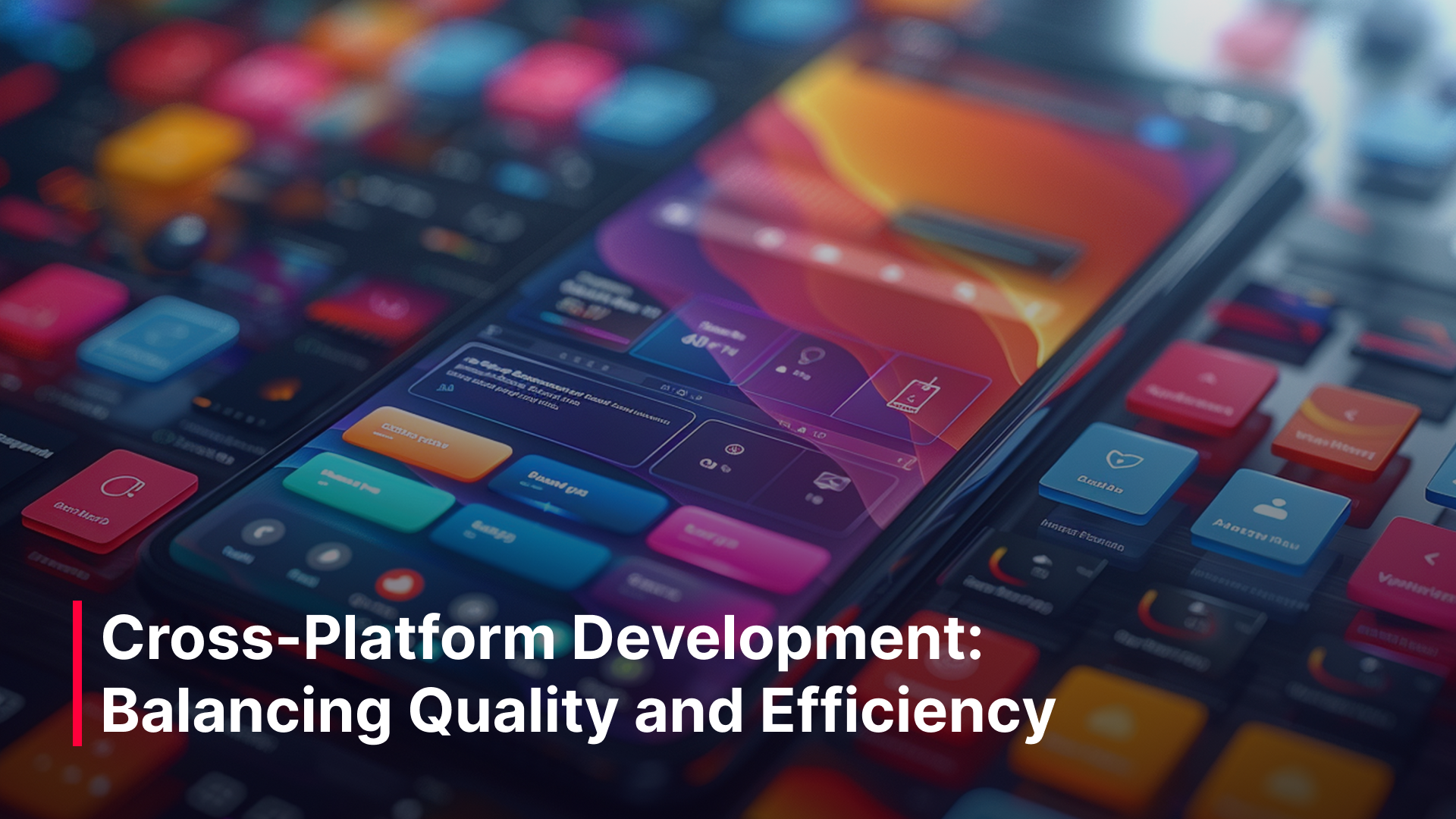The market demands rapid delivery and seamless user experience across multiple devices, and cross-platform development has emerged as a compelling solution. As entrepreneurs consider ways to optimize resources without compromising quality, cross-platform frameworks like React Native, Flutter, and Xamarin have proven to be viable paths to build applications that function seamlessly across devices. However, while cross-platform development promises efficiency gains, it also raises critical questions about quality, performance, and scalability.
In this blog post, we’ll take a look at balancing quality and efficiency, examining best practices, and strategic approaches for a cross-platform strategy.
The Case for Cross-Platform Development
Cross-platform development offers a core advantage: code reusability. By using a shared codebase, development teams can streamline processes, reducing both time and resource costs. Traditionally, companies developed separate codebases for iOS, Android, and sometimes web applications. This method was resource-intensive and demanded multiple teams with specialized skills, a challenge for companies aiming to deliver cohesive experiences across platforms while maintaining development agility.
For tech companies, a cross-platform strategy can lead to:
- cost savings – a unified codebase can potentially cut development costs by 30-40%.
- faster time to market – with a single codebase, teams can launch products more quickly across platforms.
- consistency in user experience – cross-platform frameworks allow companies to maintain a consistent UI/UX across devices, a vital aspect for brand reliability and user retention.
However, to truly capitalize on these benefits, you need to balance efficiency with the inherent trade-offs in performance, functionality, and user experience that cross-platform solutions may entail.
Challenges in Cross-Platform Development
Performance constraints – while cross-platform tools have significantly improved over recent years, there are still performance gaps compared to native development. Cross-platform frameworks introduce additional abstraction layers between the app and the device’s native components, which can cause delays, particularly for applications requiring heavy computation or animations. Performance-sensitive applications, such as gaming or AR/VR, may still benefit more from native development.
Platform-specific limitations – each platform (iOS, Android, web) has unique characteristics, APIs, and user expectations. While cross-platform frameworks offer some ability to access platform-specific features, they can struggle to fully leverage each OS’s capabilities. Additionally, when updates or new features are released by Apple or Google, cross-platform frameworks may require additional time to integrate these features, causing delays for companies relying on them.
User experience consistency – users on different platforms have distinct expectations. For example, iOS users are accustomed to specific gestures and interface elements that differ from Android’s design paradigms. Ensuring a consistent experience that feels “native” to each platform while using a single codebase requires an understanding of these nuances and a willingness to adapt the app accordingly, even within a cross-platform framework.
Technical debt and maintenance – while cross-platform frameworks reduce initial development time, they can also introduce technical debt. A unified codebase needs to accommodate every platform’s specific requirements, which can create complex dependencies and maintenance challenges. One thing you should evaluate before committing to a cross-platform strategy are the long-term costs and maintenance efforts, considering the maturity and future evolution of the chosen framework.
A Comparative View
React Native – developed by Facebook, React Native allows developers to use JavaScript to build cross-platform applications. Known for its flexibility and strong community support, React Native is ideal for applications requiring frequent UI updates. However, it can struggle with performance in high-demand applications, as the JavaScript layer can become a bottleneck.
Flutter – Google’s Flutter framework, based on the Dart language, offers a highly customizable UI and excellent performance due to its direct compilation to native code. Flutter provides great flexibility for custom animations and dynamic UIs but has a steeper learning curve and less built-in support for platform-specific functionality, which can limit its suitability for certain types of applications.
Xamarin – part of Microsoft’s ecosystem, Xamarin uses C# and .NET, allowing companies with existing .NET expertise to transition into mobile development easily. Xamarin offers deeper platform-specific integrations compared to some other frameworks, making it suitable for enterprise-level applications. However, its UI customization capabilities are limited, and it can lead to larger app sizes.
Best Practices: Balancing Quality and Efficiency
Evaluate application complexity and requirements. The suitability of cross-platform development largely depends on the complexity of the application. For relatively simple applications, such as e-commerce or content-driven platforms, a cross-platform approach may be ideal. However, for apps requiring significant use of device-specific features, native development may offer better results. CTOs and CIOs should assess each project’s requirements and performance demands to make an informed decision.
Prioritize user experience. Quality user experience is paramount, especially for applications with high user engagement. When pursuing a cross-platform approach, it’s crucial to understand and implement each platform’s UI/UX standards, leveraging the framework’s tools to make the app feel native for each user group.
Maintain flexibility with hybrid approaches. Cross-platform development doesn’t have to be an all-or-nothing solution. Many teams adopt a hybrid approach, where core components are developed cross-platform, while certain high-performance or platform-specific elements are developed natively. This allows teams to balance efficiency with the need for customization and performance.
Invest in skilled talent and continuous training. Although cross-platform development reduces the need for specialized teams, it’s important to invest in developers who are adept in both the chosen framework and native development. Knowledgeable teams will be better equipped to address platform-specific nuances, maximize the potential of the cross-platform framework, and troubleshoot challenges as they arise.
Choose the right tools for testing and performance monitoring. Cross-platform apps require rigorous testing to ensure quality and consistency across devices. CTOs and CIOs should invest in automated testing tools, such as Appium for UI testing and Firebase Performance Monitoring for tracking app performance. Proper monitoring ensures that the app performs well across platforms and helps teams identify issues early, reducing technical debt.
Plan for future scalability. Cross-platform frameworks evolve, but they don’t always keep pace with native advancements. Plan for scalability by regularly revisiting the framework’s capabilities, ensuring it still meets the company’s long-term goals. Moreover, choosing a framework with an active development community can help you make sure that the app stays compatible with evolving device features.
Conclusion: Is Cross-Platform Development Right for Your Company?
The decision to pursue cross-platform development affects both short-term efficiencies and long-term product quality. Cross-platform frameworks offer compelling advantages in cost reduction, development speed, and scalability, but they come with inherent trade-offs in performance and customization that must be carefully weighed.
By following a tailored approach—considering the specific demands of every application, working with a hybrid mindset, and investing in skilled talent and monitoring tools—you can maximize the value of this approach.


